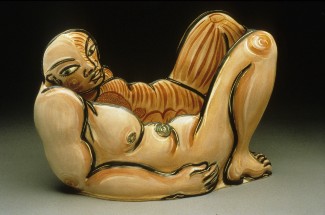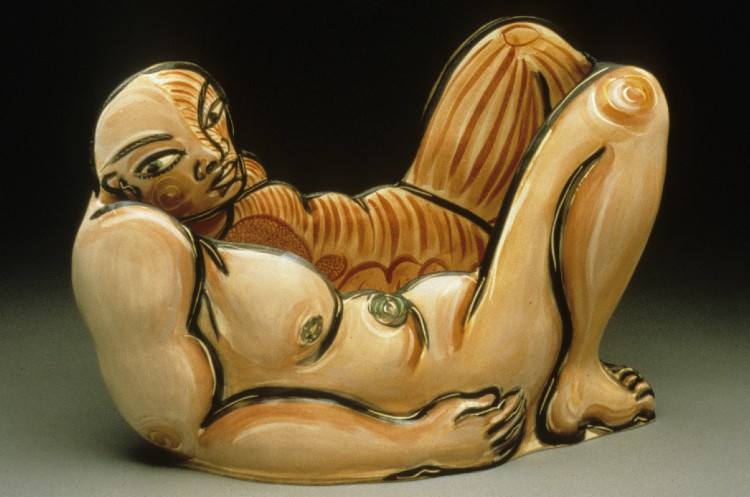
NEW YORK – From his groundbreaking envelope-form slab vessels that jumpstarted his career as a ceramicist to his larger-than-life figurative works, Japanese-American artist Akio Takamori (1950-2017) was a leading figure in the ceramics world whose influence is still felt today.Working right until his death from pancreatic cancer in January 2017 at age 66, Takamori pushed American ceramics to new heights during his career while bridging the gap between East and West to explore ideas of cultural identity.
Born and raised in Japan, he was working as a production potter there until a fateful meeting with noted potter and American ceramics instructor Ken Ferguson, who encouraged him to come study in the United States, which he did in the 1970s. In 1976, he earned a bachelor’s degree in fine art from the Kansas City Art Institute, where Ferguson taught, and two years later, a master’s in fine art from the New York State College of Ceramics, Alfred University. Settling in Seattle, Takamori taught at the University of Washington and began showing his artwork there in the mid-1980s.

Private collectors and museums quickly became fans of his bold work, which was largely autobiographical, often referencing memories of his childhood and people in his hometown, as well as mythological themes. His artworks, especially his life-size, coil-built memory figures painted in a monochromatic style, are represented in several key museums, including the Nelson-Atkins Museum of Art in Kansas City, the Seattle Art Museum, the Los Angeles County Museum of Art and the Victoria & Albert Museum in London.
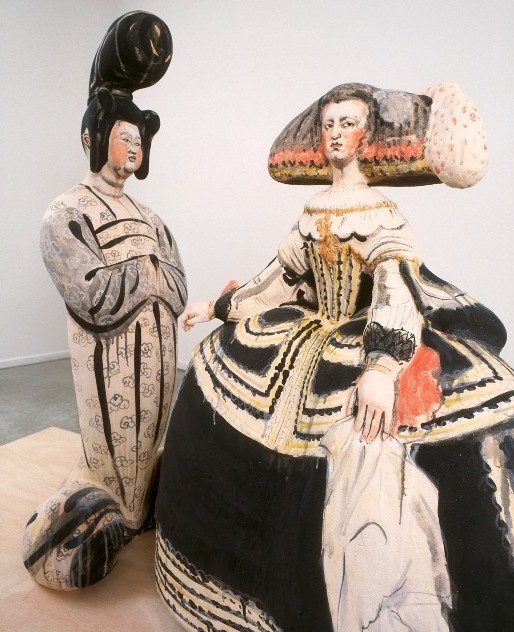
James Harris, gallerist at the James Harris Gallery in Seattle, who was Takamori’s longtime art dealer, said the artist was one of the figures who really broke down the mold or the idea of craft ceramics and pushed it into fine art. “I think the more that people look at his work now, they will see that it really deals with global cultural issues,” he said. “I know it’s very relevant today but it was always relevant to him during his entire career for 35 years – breaking down cultural barriers and making people aware of people’s differences.” Harris explained that Takamori was inspired artistically by the two cultures that he lived in. “He thought of himself as American but he had this Japanese upbringing and background that he relished as part of him and he loved his American-ness too,” he said. “His work is always sort of tied between East and West – a very personal view of thinking about Western art historical traditions … and mixing the two cultures.”

Harris recalls being struck by one of Takamori’s forms, his envelope-form sculptures where the artist basically took three slabs to create a vessel. These works were and continue to be highly desirable today and even early on, sold for several thousand dollars each. The bottom slab was oval-shaped and the next two slabs were attached to the bottom and sides, reminiscent of an envelope. “So you had something that was hollow on the inside and then he would kind of push and mold the forms outside,” he said. The artist would paint the vessels with glazes, often creating figures locked in intimate embraces. “That really kind of launched his career – it was a new way to look at the form, to create two-dimensionality with glazes into kind of a three-dimensional form,” Harris said. “Often you would have the outside of a figure painted on the front side and then as you would peer into the inner part of the figure you would see the interior of the figure or maybe another figure behind it. When you have really fabulous examples from that period, those pieces are very desirable.”
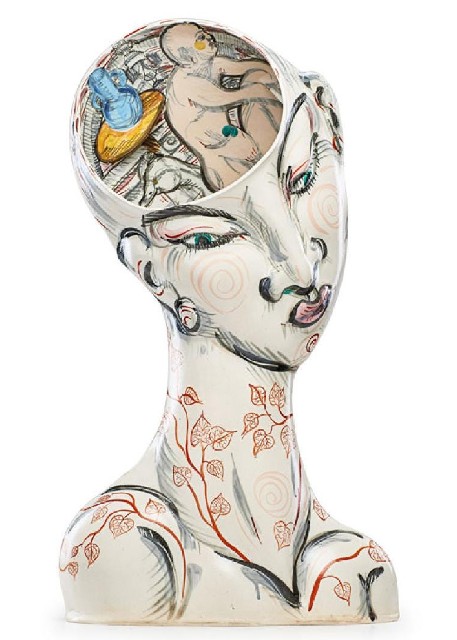
After working on his envelope-form vessels for about 10 to 15 years, Takamori began creating figures that paid homage to his childhood and a wonderful sleeper series of recumbent figures. “He evolved into making these beautiful poetic sculptures, mainly with black ink glazes on top of a clay body,” Harris said, saying these memory figures are highly collectable also. Demand runs in tandem with value and Takamori’s work comes up at auction only periodically, Harris said, saying many owners love their works by him so much that they seldom part with them.

Expanding his memory series into broader topics but always with a nod to history, from images inspired by artist Diego Velasquez to the Japanese royal court, Takamori was always sort of looking at history in a different way and trying to build or comment on Western and Eastern history often by bringing them together, Harris added.
Michael Mroczek, co-auctioneer at MBA Mroczek Brothers Auctioneers & Associates | Seattle Auction House, has been a collector of ceramics and Takamori’s work for nearly two decades. While studying at the University of Washington, where he earned a bachelor’s degree in art history, he deeply regrets never having had the opportunity to take a ceramics class taught by Takamori. The two later met several times at lectures, however.
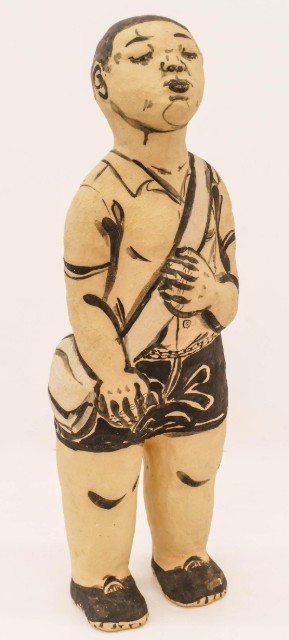
Asked what attracted him to Takamori’s works, Mroczek explained that, being one-quarter Japanese, he has always been drawn to the Japanese aesthetic and early on found the envelope forms quite compelling. “What they are are kind of three-dimensional Japanese woodblock prints – shunga prints [a genre of woodblock prints celebrating erotic themes]. He was able to translate that really flat print into a three-dimensional form.” He admires how the artist was able to convey a deep intimacy in these works that often feature hugging or contorted sexual figures. “One that I own that is my absolute favorite is of a woman and man and their eyes are literally touching.”
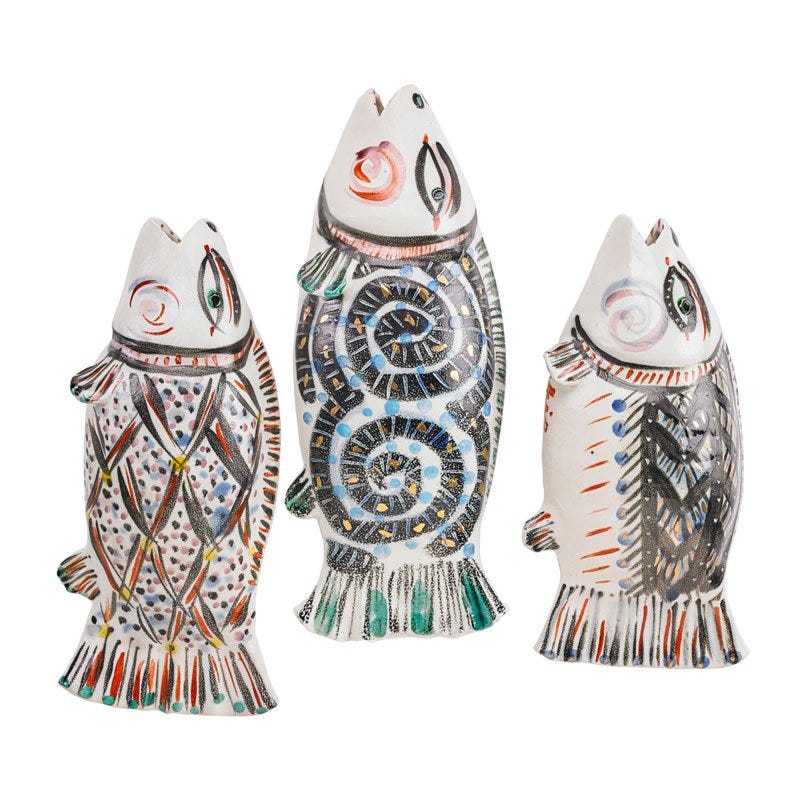
Takamori’s death sent shockwaves through the ceramics and art world. In addition to teaching and influencing new generations of artists, the artist left behind a legacy of a powerful body of work. Celebrated for his bold works and inventive use of form and paint to create expression and dimensionality, Takamori has left the world a gift of thought-provoking artworks. Even in his final series, “Apology,” showing male world leaders in contrite poses, such as Willy B, now on display at the Seattle Art Museum, he acknowledges key historical moments and offers a hopeful view for the future that seems especially relevant today.
# # #


